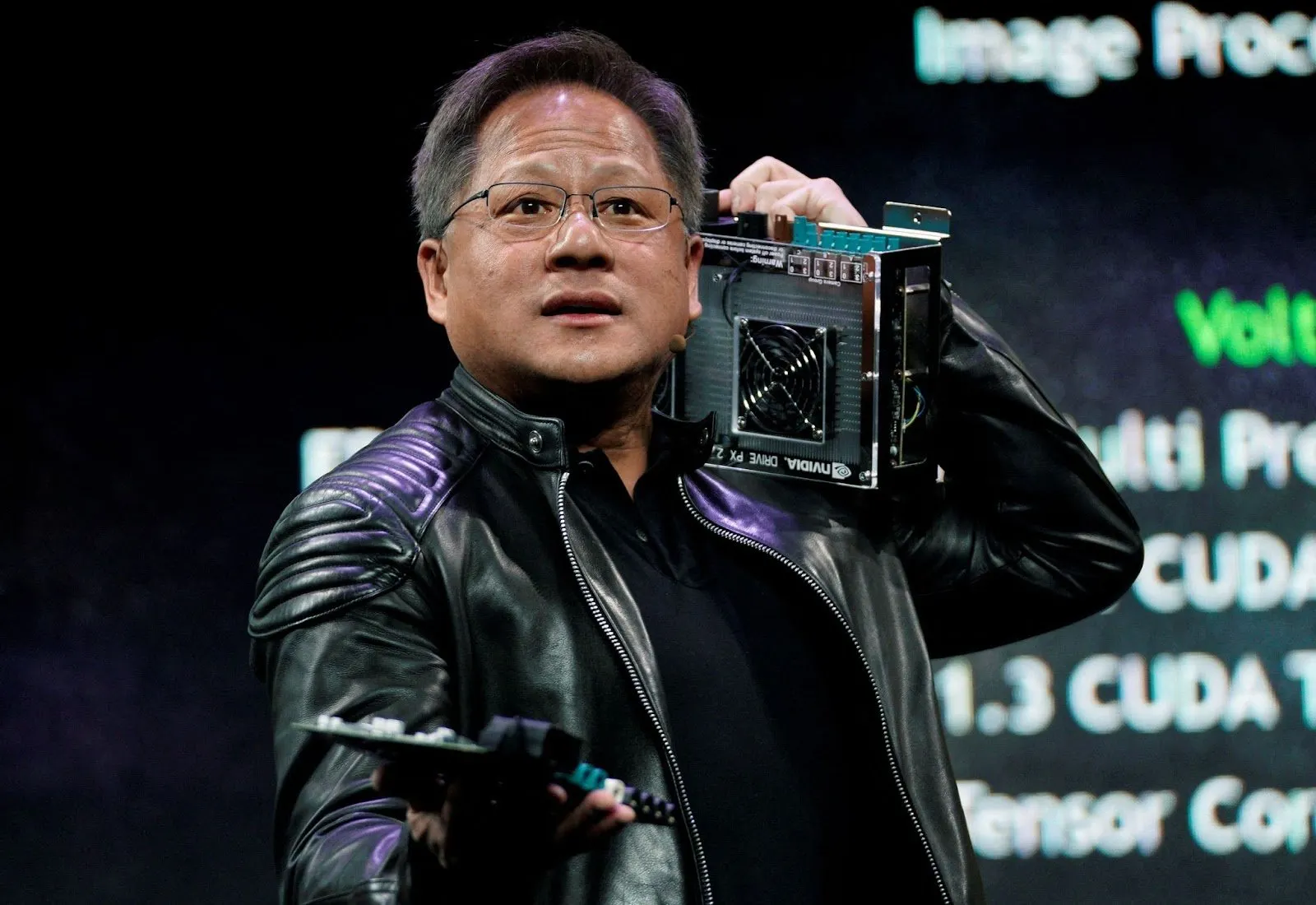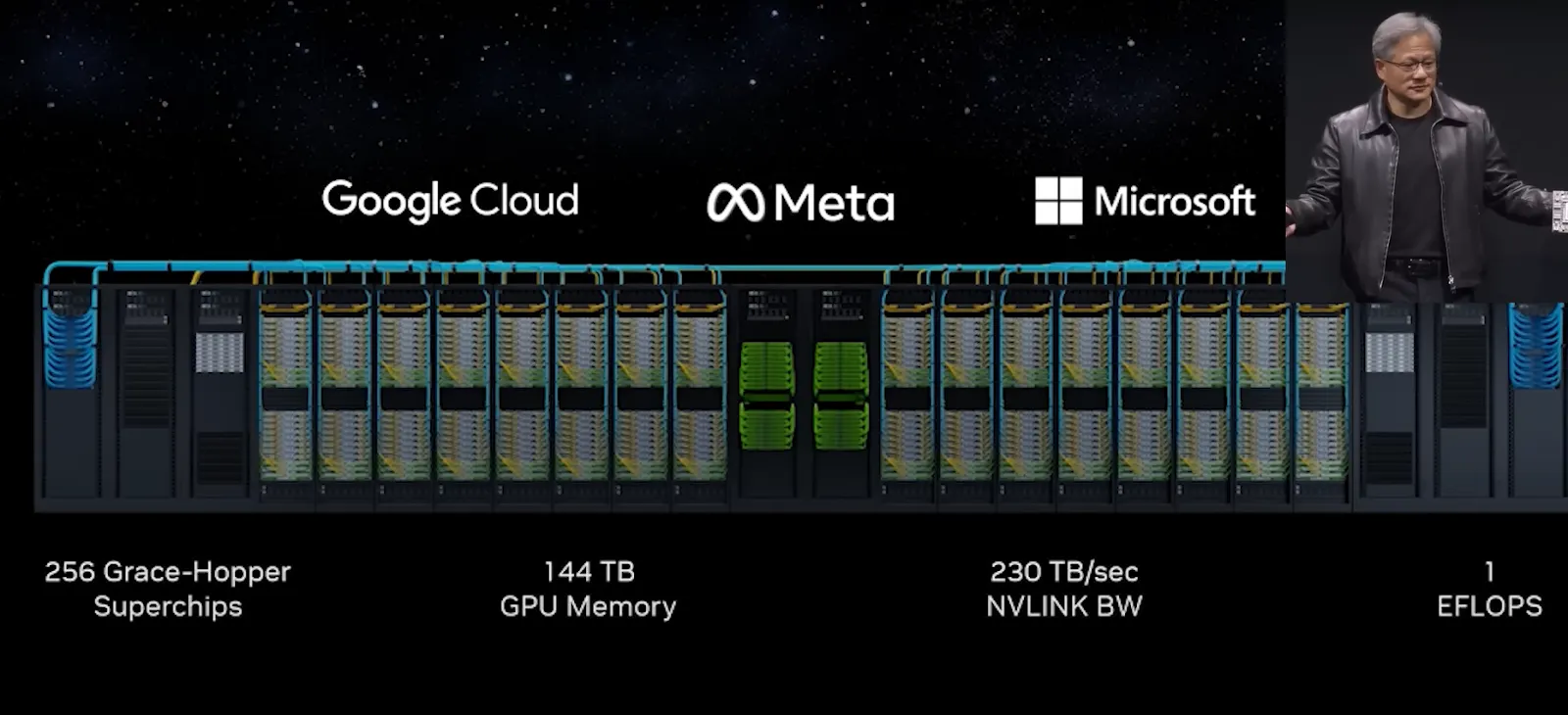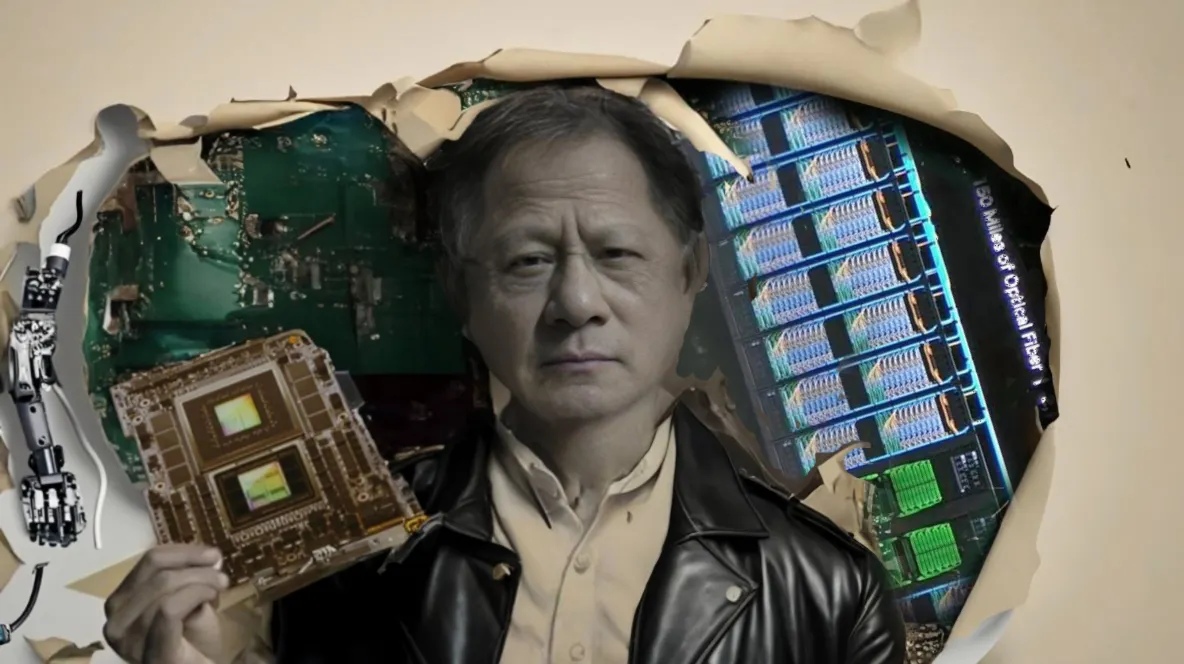“There’s a war going on out there in AI, and Nvidia is the only arms dealer,” Raymond James managing director Srini Pajjuri said in one of his market analyses. It’s a succinct and unimpeachable statement of fact. Nvidia’s unparalleled AI hardware is the engines powering almost every player in the AI race.
This has been the case for a while, but 2023 has been a landmark year for Nvidia, a period marked by meteoric growth and industry dominance, with AI turning the company into a cultural phenomenon.
Investors have certainly noticed. Nvidia stock (NASDAQ:NVDA) is up over 200% since the end of 2022, and is today flirting near its all-time high just north of $499 a share.
Amidst this surge, company CEO Jensen Huang is also becoming a fashion icon of a sort, with a signature black leather jacket that’s reminiscent of Steve Jobs' iconic turtleneck. Huang’s look has become a symbol of tech culture, and his flair and hardware chips became so powerful that the Biden administration declared their products a matter of national security. Suddenly, Nvidia chips were a major chess piece in the technological war being waged from multiple fronts against China.

A company that is relevant enough to grab the attention of global leaders, tech giants, and fashionistas is a clear pick for the Emerge Company of the Year for 2023.
The Grace Hopper Supercomputer
While there are a number of factors behind Nvidia’s meteoric rise, and while the company offers a range of computer hardware, we’ve given top billing to a specific product in the Nvidia lineup: the DGX GH200 Grace Hopper Supercomputer.
The latest jewel in Nvidia's crown, the GH200 stands as the most powerful engine in the AI race, and it stands in a league of its own thanks to its union of two of Nvidia’s most powerful technologies: The Grace CPUs and the Hopper GPUs. Ushering a new era in AI infrastructure, the DGX GH200 packs unmatched processing power through 256 integrated GH200 Superchips. This dwarves the 8 GPUs per system that could be linked in previous offerings. The DGX GH200 is the only AI supercomputer that offers a unified pool of resources.
It is also the first supercomputer to pair Grace Hopper Superchips with the Nvidia NVLink Switch, enabling all GPUs in a DGX GH200 system to work together as one, effectively removing limitations around fragmented memory, modeling complexity, and parallelization
We’re talking about a model so expensive and powerful that only a select few in the industry have the privilege of wielding it. “Google cloud, Meta and Microsoft will be the first companies in the world to have access (to the GH200 supercomputer),” Huang said during Nvidia’s keynote at Computex 2023. “This is the DGX GH200, it is one giant GPU”

For reference, the Nvidia’s A100 chips used to train ChatGPT can be combined to share 320GB of vRAM. These new chips take that limit to 144TB—460 times more.
Already, key players across industries are eager to leverage the power of the GH200 in real-world applications.
"Uber has achieved great results with OCI Compute and NVIDIA GPUs for Michelangelo, our machine learning platform," said Kamran Zargahi, Senior Director of Technology Strategy at Uber. "With the upcoming instances based on NVIDIA Grace Hopper, we aim to get even more value for similar workloads."
Meanwhile, AI service provider Cohere said it’s expecting to “to create and serve LLMs faster and more economically with these new instances based on NVIDIA GH200.”
Ongoing innovation
In the realm of artificial intelligence and high-performance computing (HPC), few names resonate as profoundly as Nvidia. The company, founded in 1993 by Jensen Huang, Chris Malachowsky, and Curtis Priem, began its journey with a focus on 3D graphics for gaming and multimedia. Nvidia's invention of what many argue to be the first consumer GPU for personal computers in 1999 set the stage for reshaping the computing industry.
By 2006, Nvidia had opened the parallel processing capabilities of GPUs to science and research with the unveiling of its CUDA architecture. This development marked a significant shift, allowing GPUs to be utilized beyond traditional graphics processing, paving the way for advancements in AI and HPC.
The company's influence further intensified in 2012 when it sparked the modern AI era by powering the breakthrough AlexNet neural network, a cornerstone in deep learning and AI research.
Nvidia’s research made it a leader in the gaming world with the Geforce and RTX series of GPUs, but its AI was only infused in the company’s values after success of the A100 and H100 chips.
The latest marvel from Nvidia's AI products came in the form of the GH200 Grace Hopper superchip, a breakthrough accelerated CPU-plus-GPU hardware designed from the ground up for giant-scale AI and HPC applications, fusing together workloads that have been traditionally separated.
Named after Grace Hopper, a renowned computer scientist and US Navy rear admiral, the GH200 Grace Hopper Superchip is not just a technological achievement but a catalyst for global scientific innovation.

Powering over 40 AI supercomputers globally, the GH200 is at the heart of the latest hardware from giants such as Dell Technologies, Eviden, Hewlett Packard Enterprise (HPE), Lenovo and QCT.
In fact, just last week, HIVE secured two of these supercomputers to further improve its cloud computing service. The company seems to be following the money, pivoting from Bitcoin mining to AI as a safe bet for a profitable future.
“Put simply, we have been building HIVE’s GPU and AI business unit to be the ultimate AI infrastructure pick-and-shovel play,” Hive’s executive chairman Frank Holmes said. “As leaders in the tech sector, we believe we’re undervalued as a company with both a highly efficient Bitcoin mining operation and now a flourishing GPU compute business unit.”
Beyond the business field, several top supercomputing centers across the globe, including Germany's Jülich Supercomputing Centre and Japan's Joint Center for Advanced High-Performance Computing, have chosen the GH200 for their next-generation supercomputers.
We seem to have behaved well this year, we got an early Christmas present! Two #NVIDIA #GH200 Grace-Hopper nodes arrived. They will become part of the JURECA-DC Evaluation Platform and used for preparations for JUPITER. We are excited! #HPC #exa_JUPITER pic.twitter.com/FNjtrvOUG5
— FZ Jülich-JSC (@fzj_jsc) December 15, 2023
These centers are tackling urgent scientific challenges, from climate change mitigation to pandemic response, showcasing the GH200's capability to facilitate groundbreaking research.
Award-winning hardware
The Nvidia DGX GH200 Grace Hopper AI supercomputer stands out for its innovative fusion of CPU and GPU, a harmonious integration that propels it beyond traditional hardware limitations. This synergy is vital in an era where the demand for more powerful hardware to develop sophisticated software and services is skyrocketing.
Beyond just muscle, the GH200 is a testament to Nvidia's foresight in an industry racing towards increasingly complex AI and computational challenges. It's not just about handling current workloads but about offering a gateway to future advancement and helping to drive forward generative AI and large-scale scientific research. Its widespread adoption by top-tier supercomputing centers worldwide underlines its utility, signaling a shift towards more integrated and potent AI and high-performance computing solutions.
And yes, beyond all that, Huang assured us, “It can even run Crysis.”
Edited by Ryan Ozawa.

